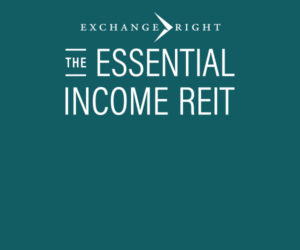Phoenix American: 2022 Trend Report for Commercial Real Estate Uneven Recovery and Pandemic’s Lasting Effects
Executive Summary
• The U.S. economy and real estate markets are reopening following the biggest economic shock in U.S. history. Although Covid-19 cases are subsiding from recent Omicron variant-fueled highs, the outlook is far from certain.
• Rental apartments are one of the hottest sectors coming out of the pandemic, marked by surging demand and a low risk of oversupply. During the pandemic, secondary cities in the South and West have significantly outperformed the coastal gateway metros in occupancy and rent growth. Doom-and-gloom predictions of an eviction tsunami appear to have been vastly overstated.
• The office market has been hit hard by the pandemic with a dramatic slowdown in new leasing activity and a torrent of new sublease space coming to market. Many major employers planned to reopen offices in the late summer and early fall; however, rising case numbers prompted delays. The work-from-home effect will continue to unfold as 70% of large office occupiers plan to reduce their office footprints by 10% to 30% in the next three years.
• The pandemic and the sudden shutdown of large swaths of the economy in 2020 caused an explosion in warehouse demand across the country as spending moved online. While the e-commerce revolution pre-dates the pandemic, this sudden shift accelerated the trend by 3 to 5 years, virtually overnight.
• Performance in the retail property sector varies widely by region, submarket, and retail property subtype. Secondary cities like Phoenix and Austin have outperformed gateway cities like New York and San Francisco. Suburban retail properties have tended to outperform main street retail in major cities. The e-commerce revolution, along with changing shopping habits and shifting consumer preferences, are blurring the line between brick-and- mortar retail and logistics real estate.
• The U.S. hotel sector is fresh off a surprisingly strong peak summer travel season, marked by significant increases in occupancy and record-high average daily rates. Despite the strong peak season, the hotel market is not out of the woods yet. With the peak leisure travel season now over and business travel still weak, industry observers expect performance to continue to soften.
• Real estate investment activity is bouncing back with $177 billion in transactions during the latest quarter, an increase of 151% year-over-year. Total return for core, institutional-quality real estate jumped 5.2%, the largest quarterly total return since 2005. Environmental, social, and governance (ESG) factors are coming into sharper focus at all stages of the investment process. Investors have started to move back out on the risk spectrum as low interest rates and heavy competition in highly liquid markets squeeze cap rates.











